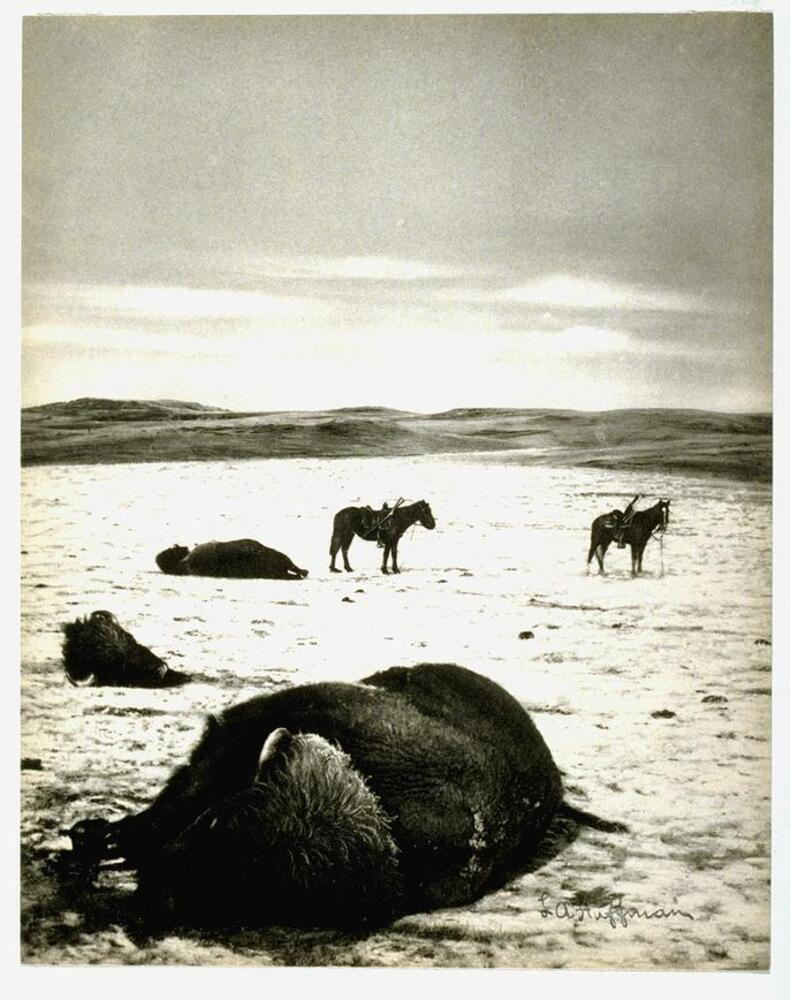A Closer Look at Laton Huffman's After the Chase, North Montana, 1882
Huffman, a young photographer of 25, moved to Montana in 1879 to be the post photographer at Fort Keogh just three years after George Armstrong Custer’s defeat at the Battle of Little BighornHuffman came to know settlers and American Indians living in the area and took his “four legged tripod” camera around to document goings on in the region. This image documents European Americans hunting bison, an already endangered species, for their hides. Unlike the American Indians, these hunters killed bison in large numbers and only took the hides and trophy-heads, usually leaving the rest of the animal to rot. This image, as is described in Alan Braddock’s 2009 article, was later used to illustrate the plight of the American Bison and the need for wildlife conservation.
Discussion Questions:
What role(s) did photography play in early environmental legislation in the US?
How can one discuss the “truth value” of images in a context like Braddock describes when “pictures spoke for themselves”? And what kind of social and/or moral questions does the use and reuse of images pose even today?
What role do “modernity” and “technology” play when considering works like this? What role do these concepts play when considering the idea of America’s Manifest Destiny?
2 Links
Created For
K-12 EducatorK-12 Student
Museum Visitor
UMMA Docent
UMMA Staff
University Faculty
University Student
Rate this Resource
AVG: 0 | Ratings: 0
& Author Notes
All Rights ReservedLast Updated
May 25, 2017 8:40 p.m.Report
Reporting Policy

